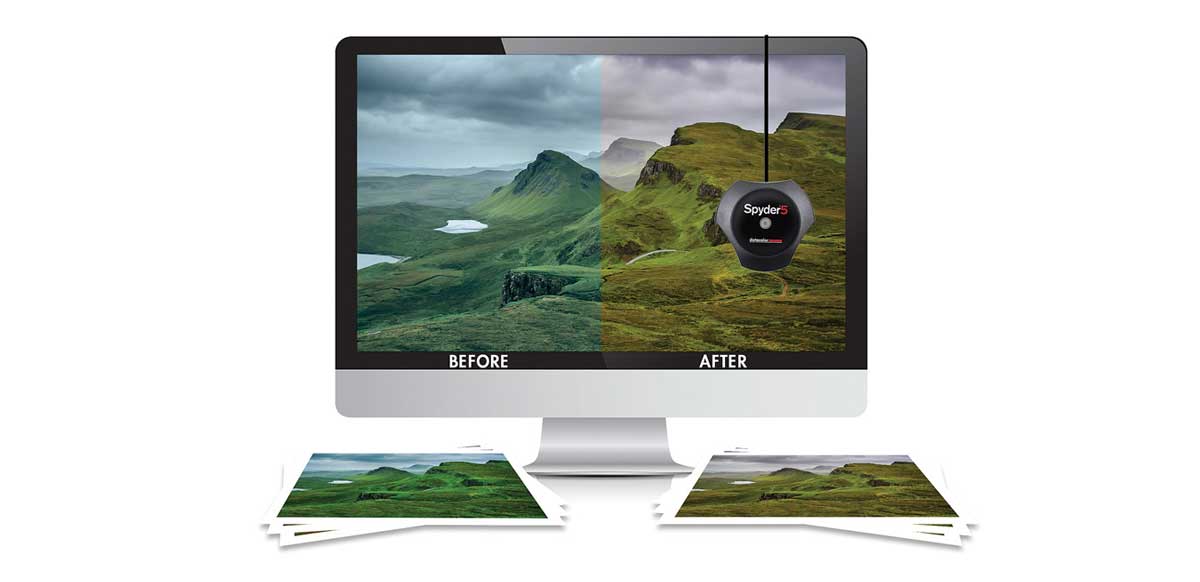The calibration process tweaks a number of settings to get the colors and contrast on your Mac as accurate as possible. It does this by changing the intensity of the main colors — red, blue, and green — and setting the white point, or the neutral white color that you see when, say, you open a new document in a word processor.
- Color Calibration 101. Not all computer monitors look identical. Different monitors may even have slightly different colors depending on the graphics card in the computer they’re connected to. But, for professional photographers, and graphics designers, accurate colors are very important. RELATED: How to Calibrate Your Monitor on Windows or Mac.
- On your Mac, choose Apple menu System Preferences, click Displays, then click Color. Open the Color pane for me. Click Calibrate. Display Calibrator Assistant walks you through adjusting your display, then creates a calibrated color profile. The number of adjustments in the calibration process varies depending on the type of display.
- SuperCal 1.2.5.zip. For Mac OS X 10.4 - 10.9 Universal. SuperCal 1.2.3.zip. For Mac OS X 10.0 - 10.3 PPC. SuperCal 1.1.4.dmg. After downloading and unzipping, simply drag and drop the application to the destination folder of your choice. It is recommended that you install SuperCal in the 'Applications' folder, but it can be installed anywhere.
- Datacolor Spyder5ELITE. Hardware Calibration Device: Spyder5 Colorimeter Software.
What is monitor color calibration?
One of the most important things to take into account when editing videos are colors, shadows, and the brightness of the video. Monitor calibration is setting your screen to a certain standard to ensure you get the most realistic and professional result.


Why is monitor color calibration important for video editors?
Monitor calibration is likely most important for video editors because their videos will sometimes be used time and time again for campaigns — be it across the hero of a website, printed on a leaflet, or as a header of an email newsletter. Monitor color calibration makes the entire process more efficient (avoiding mistakes and color hues you weren’t going for) and ensures you truly get the result you were going for.
How often should you calibrate your monitor?
You should calibrate your monitor anywhere between 2-6 weeks / at least once a month if you’re professionally working in video editing and color correction.
How to calibrate your monitor?
Generally speaking, there are a few ways to calibrate your monitor — with an online tool, desktop hardware, or integrated monitor calibration tools.
One we can not recommend is using an online tool, these tools have been known to be quick-fix options that simply cannot achieve a professional calibration effect.
The quickest way to get results for free is to use the windows and mac integrated calibration tools. But before you get started with any type of calibration, be sure your computer or laptop is up and running for at least 30 mins for it to hit its usual brightness level.
If you’re really serious about calibration though, even these methods won’t do because it relies on you manually adjusting the monitor according to what you see. And what you see is completely subjective. If you want to be sure you get things right, you’ll want to invest in hardware calibration with complimentary software — more on that below, but first, let’s show you how things are done on Windows and Mac:
How to calibrate your Windows 10 monitor
- Go ahead and enter ‚Display settings‘ by right-clicking on your screen or searching for it in your search back
- Go to ‚Advanced display settings
- Choose recommended resolution.
- Now go ahead and choose ‚Color calibration‘ > ‚Next‘.
- Adjust, your gamma, brightness, contrast according and color balance according to the examples.
- Select ‚Finish‘ to complete the calibration.
How to calibrate your Mac monitor
- Go ahead and select the Apple icon in the top left corner of your screen.
- Now go to ‚System Preferences’ > ‚Displays‘ > ‚Color‘.
- Choose’Calibrate‘ > ‚Screen calibration assistant‘.
- Select a white point according to the example.
- Give your color profile a name.
- Click on ‚Finish‘.
Important monitor calibration values to watch out for
If you decide to go the manual route of color calibration, these are the values you should watch out for and adjust.
Color Calibrated Monitor Mac
- White point
Free Monitor Calibration Software Mac
The white point of a screen describes just how white a screen is and whether the white is warmer or cooler (measured in Kelvin just like light bulbs). If you are editing digital videos on an LCD screen we recommend setting a white point at 6500K whereas if you are editing for print you should set your screen to 5000K.
- Gamma settings
Gamma affects brightness and color ratios — aka the contrast of colors on the screen. This setting depends on where you think the video will be viewed, if it’s going to be viewed on a screen where there is brightness all around like on a tv in a meeting room or phone you should set gamma to 2.2 whereas if you’re working on a film that will be viewed in a dark room you should go for 2.4.
- Luminance
This is how bright your screen is, which you should keep consistent throughout the process of color correcting a video. The standard is known to be at 120.
Apple Display Calibrator Assistant

What tools can you use for screen calibration?
Free Monitor Calibration Machine
Other than using the Mac and Windows integrated tools, you can also use so-called LCD test patterns and images to adjust your screen to match these — you can find some of those here.
How To Calibrate Monitor Mac
All set to calibrate your monitor? Get to it and once you’re done check out our guide on color grading vs. color correction.